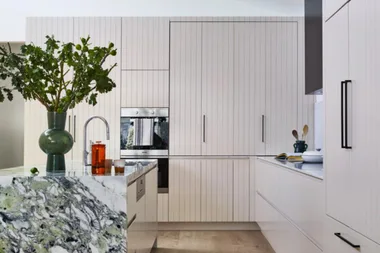Open kitchen shelving keeps the hub of your home both functional and beautiful, providing a space for beautifully styled objects while working to position useful things close to hand. Beware some common pitfalls when planning open shelving in the kitchen, however, such as how to keep things clean, how to install shelves properly and how to use wall space in the most efficient way. Read on for our top tips.
Is open shelving in the kitchen a good idea?
While beautiful to look at when styled and kept clean, open kitchen shelving can be a magnet for mess and dirt to build up – particularly near the cooking zone. The key is to make a careful edit of what goes on your shelves and ensure items are used often and/or cleaned regularly.

These open kitchen shelves echo the style of the historic cottage and are well equipped with canisters, placemats and various dinnerware essentials. (Photographer: Brigid Arnott / Stylist: Jodie Gibbons)
3 top tips for tip top shelf display
- Place like with like – group similar objects together such as matching glassware, canisters or crockery
- Stack it up – keep stacks tidy so it looks like a curated display, rather than a dumping ground!
- Pick pieces you’ll use – keep things clean by displaying items you use (and therefore wash) daily
1. How to design kitchen open shelves
Choose a finish for your kitchen shelves that echoes another design element in the space. Match timber shelves to the type of wood used for your stair treads, floorboards or dining table, or repeat a surface treatment from elsewhere in our kitchen. If you’d prefer to make a statement with custom shelving designed to stand out, ensure the surfaces are wipe-clean and sturdy enough to withstand the weight of objects you plan to display.
Measure carefully the width, depth and height of your shelves to ensure they can hold what’s required. Mock up your display with piles of plates and measure their width. Line up cups or glasses that will be grouped together and assess the needs and overall weight of the load your shelf will carry. For decorative items such as jugs and vases, allow extra height to lift and place them safely.
Assess the placement of shelves in relation to wall height and imagine how you will require access to the items and whether or not everything will be within reach. There’s no point making a beautiful display of glassware that’s out of reach of the people who will use them.
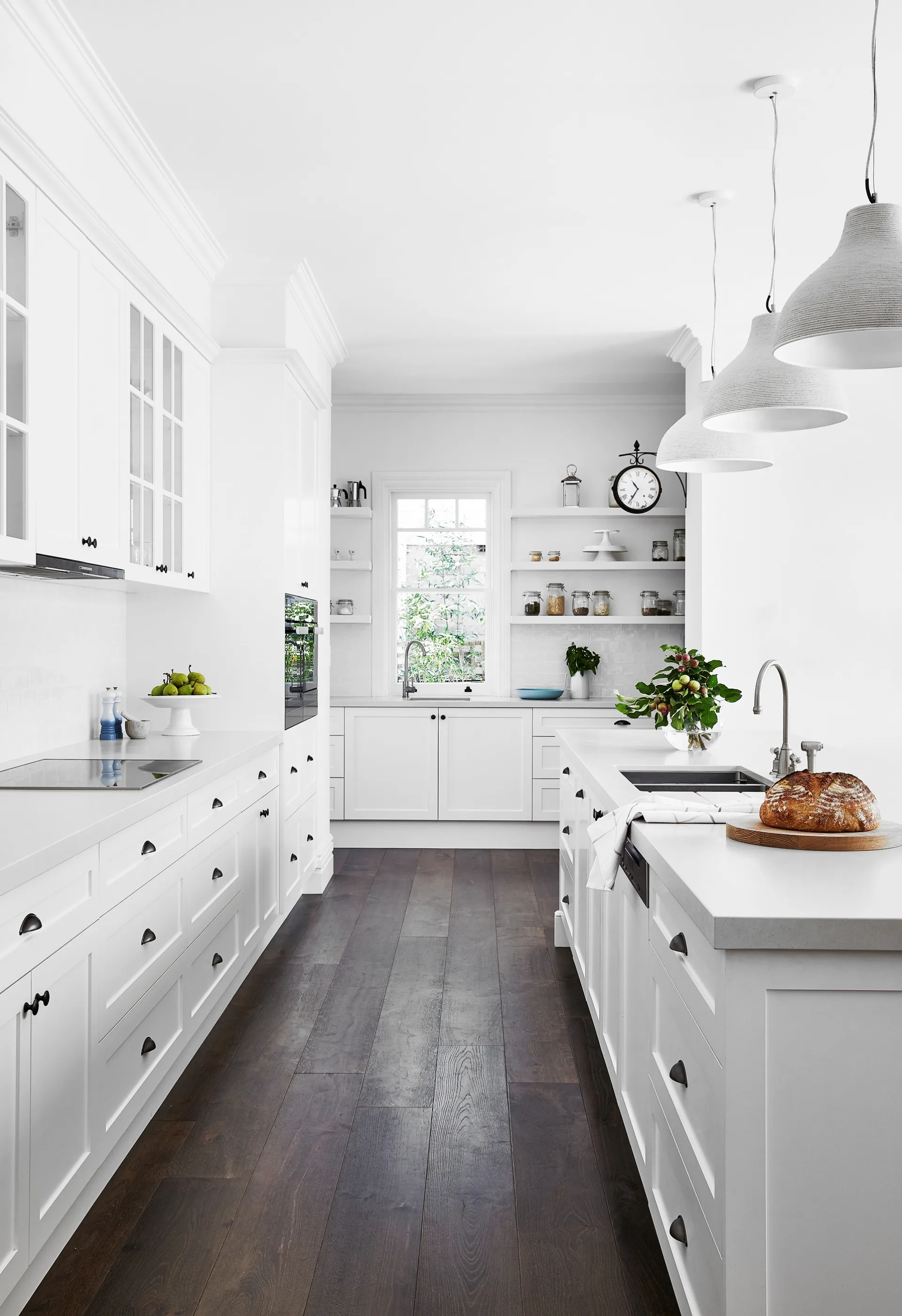
This butler’s pantry shows that open shelving has a place outside the cooking zone and still makes a beautiful impact. (Photography: Ryan Linnegar / Styling: Fiona Gould)
2. Go for visual impact
For open shelves within easy reach, display oft-used items instead of pieces that are only used occasionally. Dust decorative items on higher shelves regularly to avoid a sticky residue from kitchen fumes, which will become a magnet for dust and cooking grease.
Be selective in what you display and avoid clutter or overloading your shelves. With a saucer placed underneath and a handy jug or watering can, indoor plants can make a beautiful addition to a curation of kitchenalia.
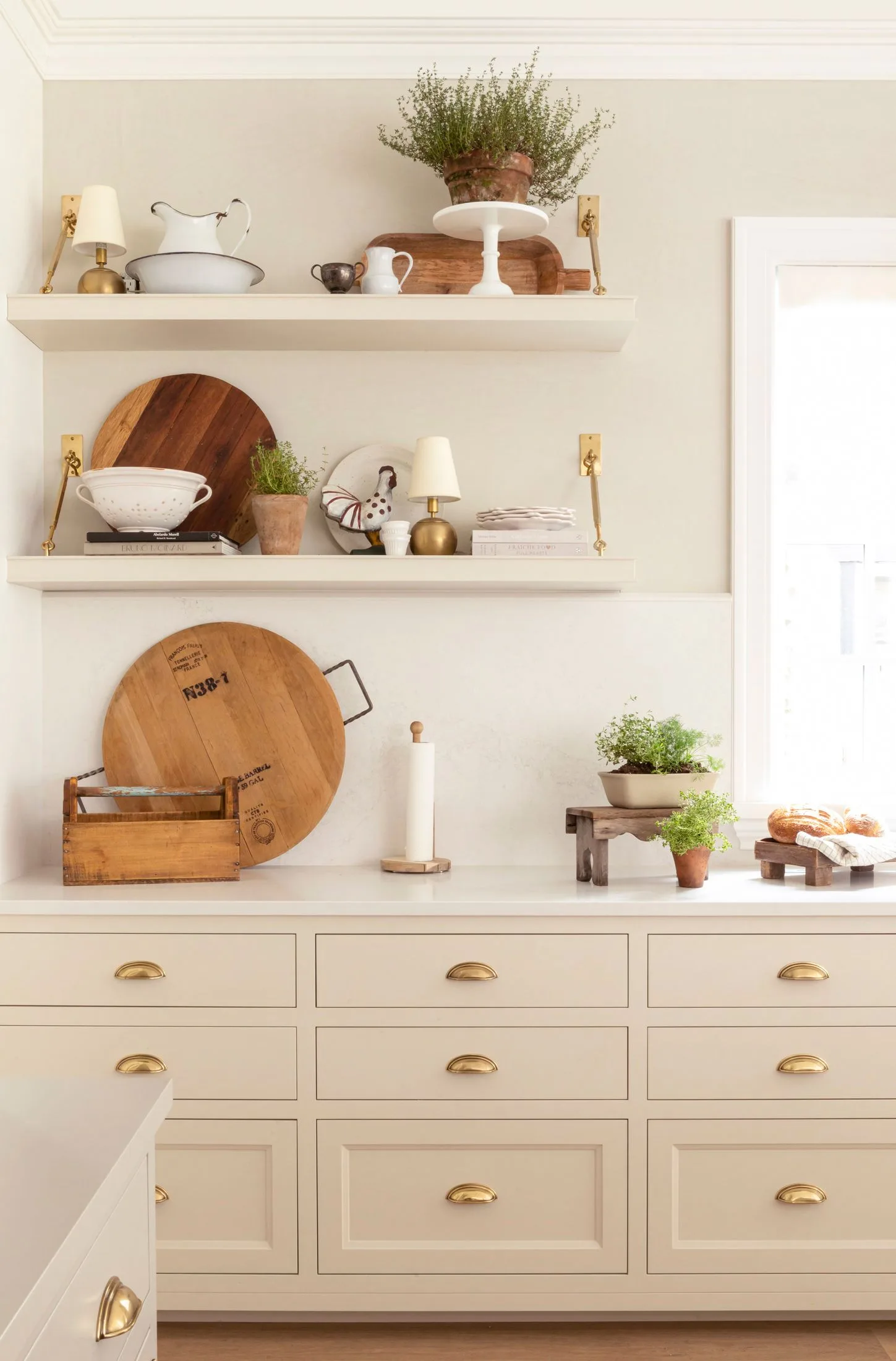
3. How to keep open shelves from going out of style
One of the best things about open kitchen shelving is that it’s a look that can be worked into any style of home, from coastal to contemporary, country to classic Hamptons. Look to the style of your kitchen and your choices of cabinetry, brackets and shelf material to keep your shelving in line with the overall aesthetic and update often what is displayed to keep the look current.
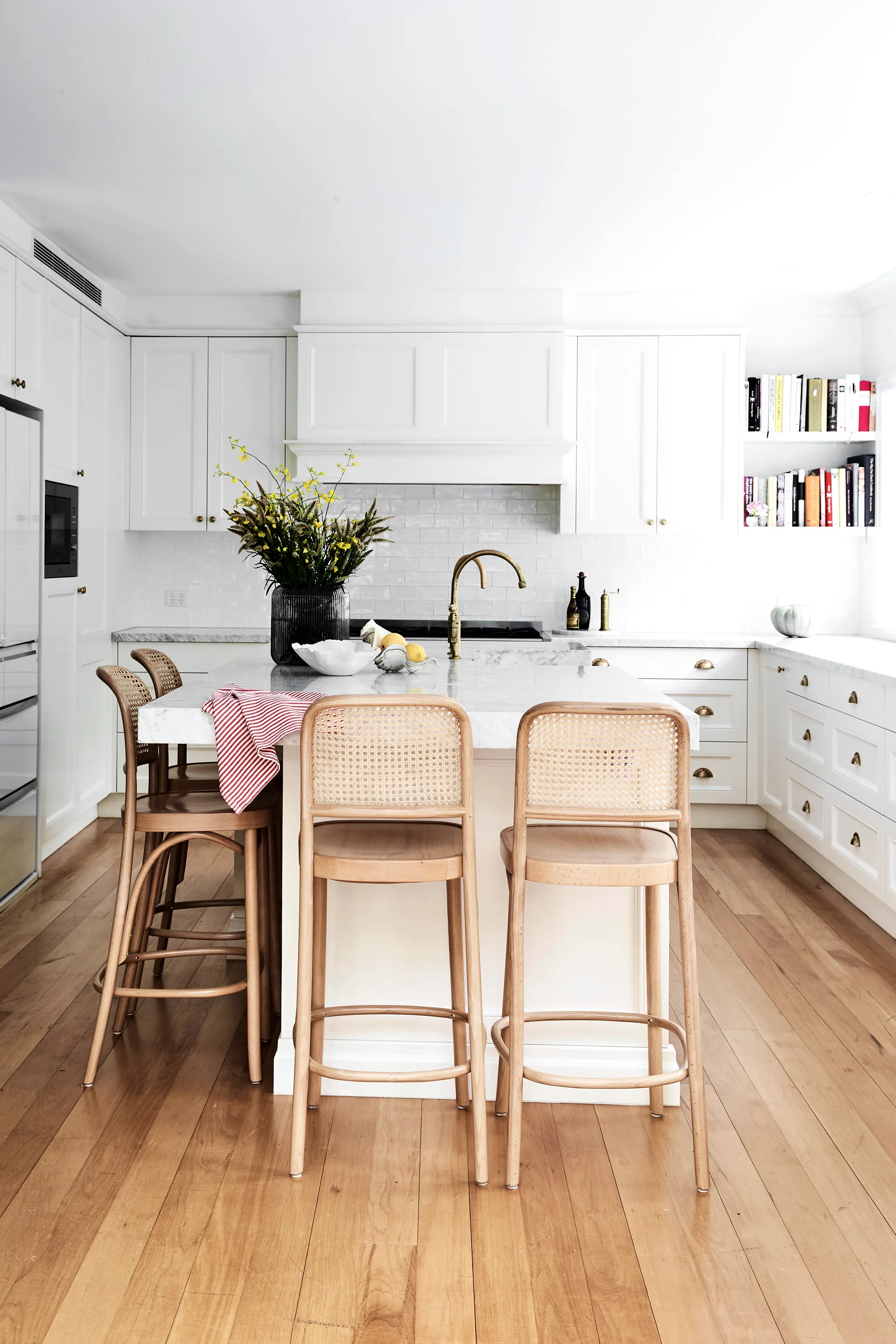
4. Add hidden lighting for your kitchen shelves
The addition of lighting above or below your kitchen shelves adds beauty and utility to your kitchen space. Weigh up your practical needs before choosing which type of lighting will work best – consider critical task lighting versus a more subtle, ambient glow. Smart lighting can be controlled from a mobile app as part of your overall home lighting system.
LED strip lights are easy to mount – even retrofit – and make task lighting energy efficient for your workspaces, while custom recessed lighting will need to be planned from the outset to allow for the installation of appropriate wiring. Motion sensor lights are another clever way to get light where and when you need it.

5. Alternatives to open shelves in the kitchen
If the idea of open kitchen shelving does not appeal to you, you may prefer to opt for integrated cabinetry with storage behind closed doors. Another alternative to open shelves and a pretty way to have your crockery and glassware on display is behind glass. If you keep the design simple, generous kitchen shelves can be housed in cabinetry that’s close to hand and kept clean and orderly.
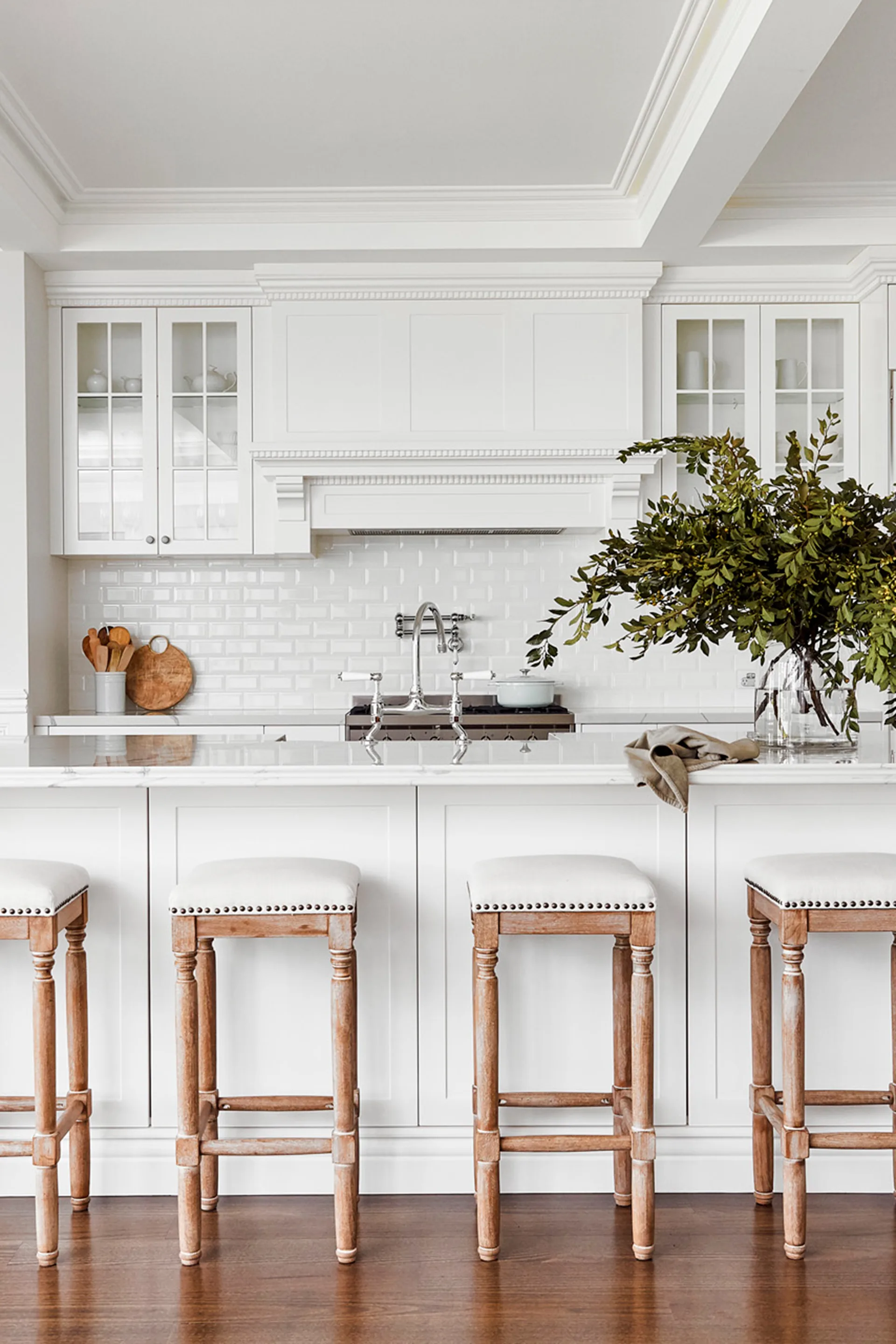
A go-to for Hamptons style kitchen is Shaker-style cabinetry. Glass cupboard fronts above the stove make for a spotless display. (Photographer: Alana Landsberry / Stylist: Corina Koch)
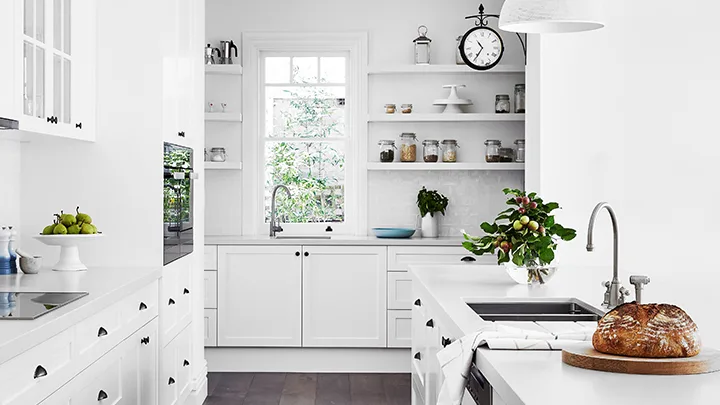 Ryan Linnegar
Ryan Linnegar

